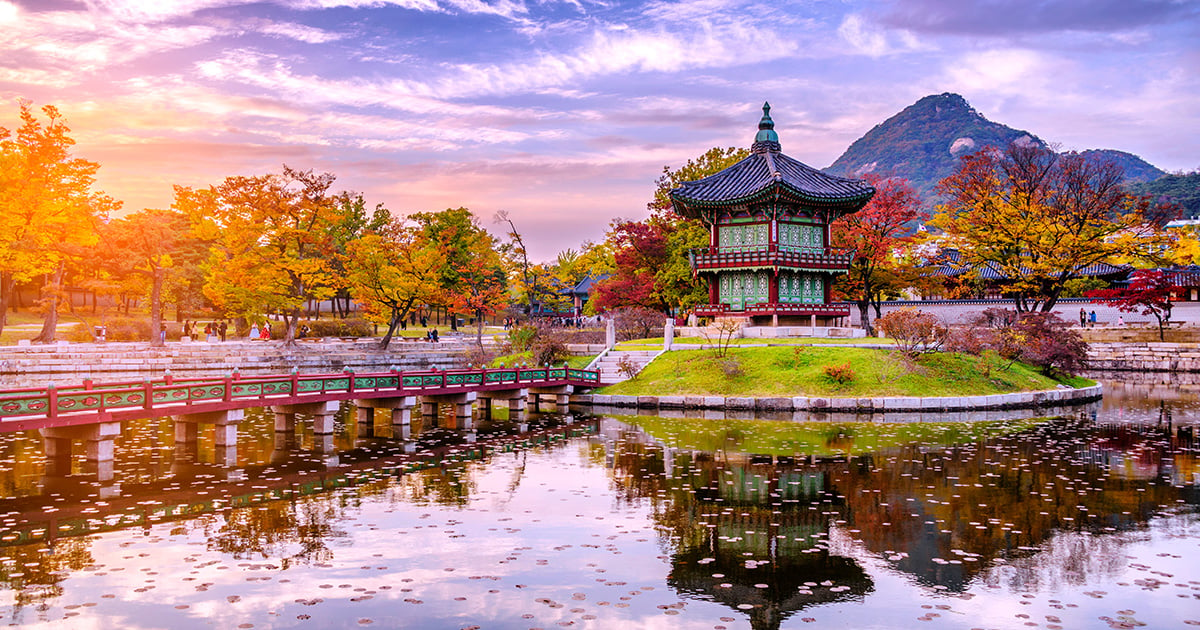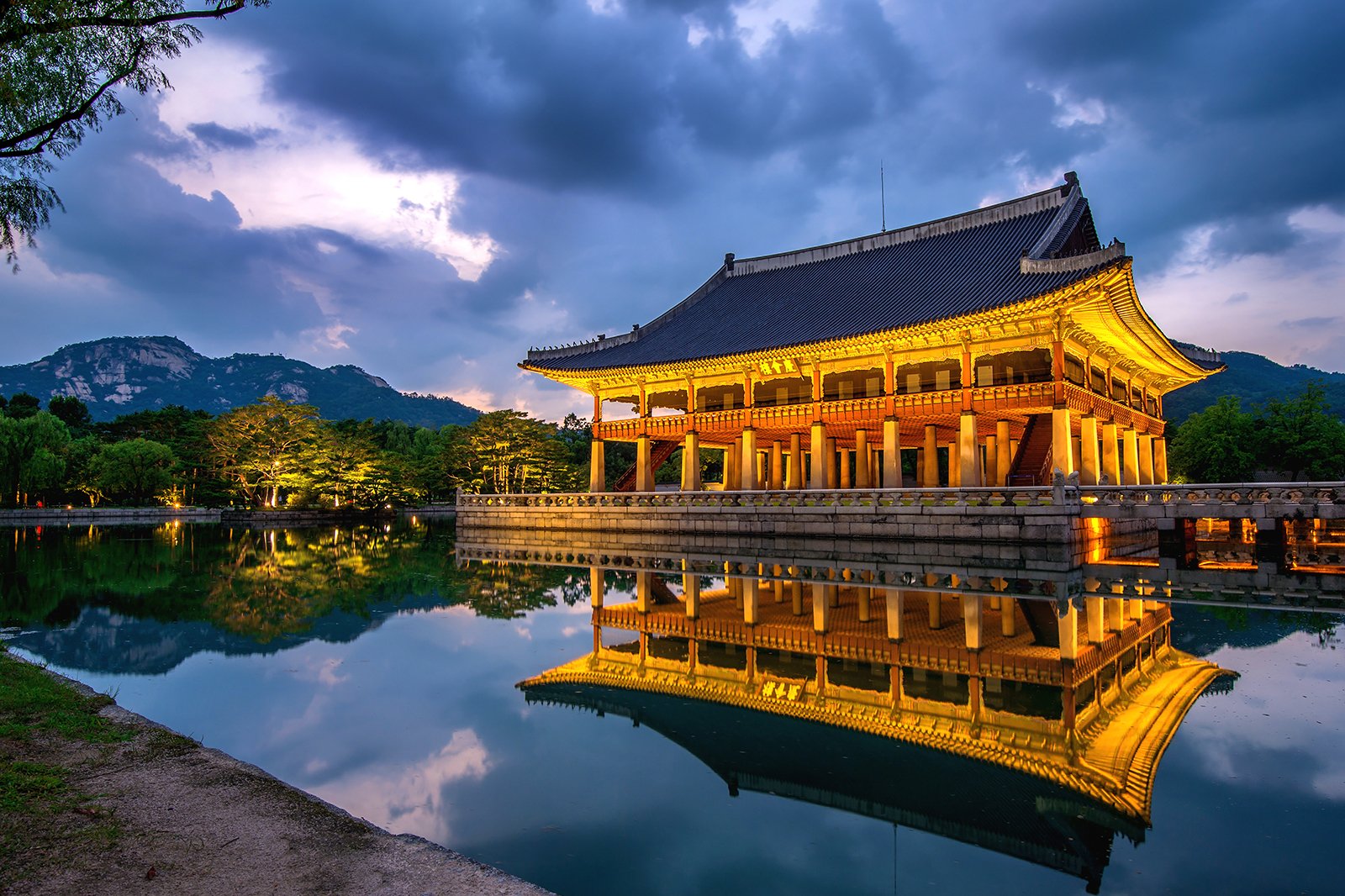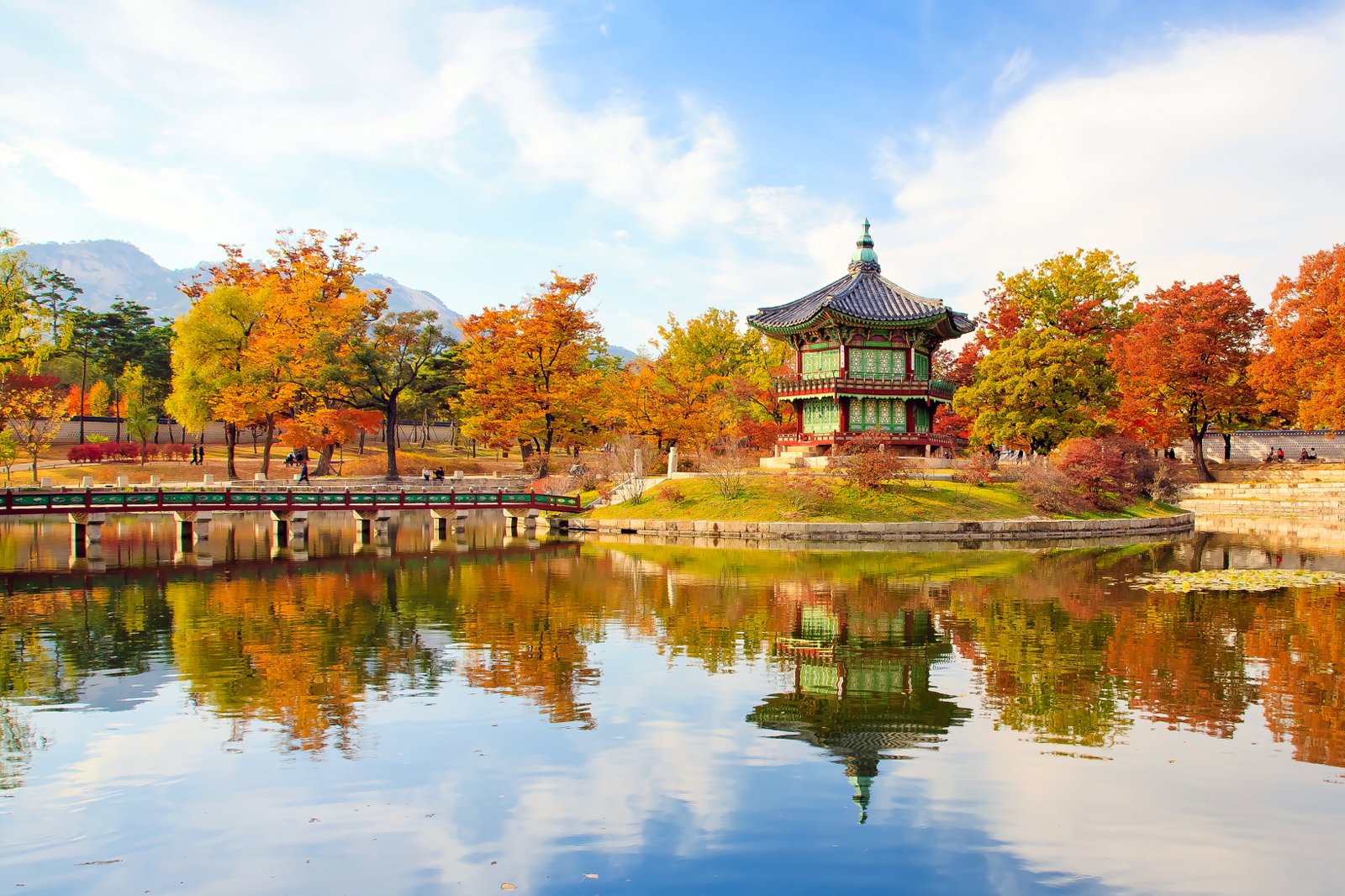
South Korea, a nation pulsating with dynamic energy, seamlessly blends ancient traditions with cutting-edge modernity. From the neon-drenched streets of Seoul to the serene temples nestled in mist-shrouded mountains, this captivating country offers an unparalleled travel experience. While the global phenomenon of Hallyu, or the Korean Wave, has undoubtedly put South Korea on the map, there’s a depth and richness to its culture, history, and landscapes that extends far beyond K-Pop and K-dramas. This article will be your comprehensive guide to unlocking the magic of South Korea, covering everything you need to know to plan an unforgettable adventure.
A Glimpse into Korea’s Storied Past: History That Shapes the Present
Understanding South Korea’s history is crucial to appreciating its present-day vibrancy. The Korean Peninsula boasts a history stretching back millennia, marked by powerful kingdoms, periods of foreign influence, and a resilient spirit of independence.

Related Articles about Beyond the Hallyu Wave: A Comprehensive Guide to Experiencing the Magic of South Korea:
- Cusco: Gateway to the Sacred Valley and the Lost City of the Incas
- China: A Journey Through Time, Culture, and Unforgettable Landscapes
- Russia: A Timeless Tapestry of History, Culture, and Adventure
- Maldives: An Azure Dream – Your Ultimate Travel Guide to Paradise
- Chiang Mai: The Rose of the North – An Ultimate Travel Guide
- Ancient Kingdoms: The Three Kingdoms period (57 BCE – 668 CE), comprising Goguryeo, Baekje, and Silla, laid the foundations of Korean culture and identity. Silla eventually unified the peninsula, ushering in a golden age of art, science, and Buddhism.
- Goryeo Dynasty (918–1392): This era is renowned for its exquisite celadon pottery and the creation of the world’s first metal movable type. It also saw the introduction and flourishing of Buddhism.
- Joseon Dynasty (1392–1897): The longest-lasting Korean dynasty, Joseon witnessed significant advancements in science, technology, and the development of the Korean alphabet, Hangul, by King Sejong the Great. It was also a period of Confucianism’s profound influence on society.
- Japanese Colonial Rule (1910–1945): A dark chapter in Korean history, this period saw the suppression of Korean culture and identity. However, it also fueled a strong nationalistic resistance.
- Division and Korean War (1950–1953): Following World War II, the peninsula was divided, leading to the devastating Korean War. The conflict left deep scars and a heavily fortified border, the Demilitarized Zone (DMZ), which remains a potent symbol of the ongoing division.
- Rapid Economic Growth: Since the armistice, South Korea has achieved remarkable economic development, transforming from a war-torn nation into a global economic powerhouse, often referred to as the "Miracle on the Han River."
This rich tapestry of history is evident in its ancient palaces, traditional villages, and the very spirit of its people.

Unveiling the Treasures: Top Attractions in South Korea
South Korea offers a diverse range of attractions, catering to every traveler’s interest.
1. Seoul: The Dynamic Capital
- Gyeongbokgung Palace: The grandest of Seoul’s Five Grand Palaces, this architectural masterpiece was the primary royal palace of the Joseon Dynasty. Witness the Changing of the Royal Guard ceremony for a glimpse into tradition.
- Changdeokgung Palace and Secret Garden (Huwon): A UNESCO World Heritage site, this palace offers a more naturalistic and serene atmosphere, especially its stunning Secret Garden, a tranquil oasis.
- Bukchon Hanok Village: Wander through charming alleyways lined with traditional Korean houses (hanok), offering a picturesque glimpse into Seoul’s past.
- Myeongdong: A shopper’s paradise, Myeongdong is a vibrant district famous for its cosmetics, fashion, street food, and bustling atmosphere.
- Insadong: This cultural hub is perfect for souvenir shopping, browsing traditional crafts, art galleries, and enjoying a cup of traditional Korean tea.
- N Seoul Tower: Ascend this iconic landmark for panoramic views of the sprawling city, especially breathtaking at sunset and night.
- Gangnam District: Made famous by PSY’s hit song, Gangnam is a sleek and modern district known for its upscale boutiques, trendy cafes, and entertainment venues.
- War Memorial of Korea: A somber yet essential visit, this museum offers a comprehensive overview of the Korean War and the nation’s military history.
- Demilitarized Zone (DMZ): A day trip to the DMZ is a profound and often sobering experience, offering insights into the divided peninsula. Visit the Joint Security Area (JSA), infiltration tunnels, and observation posts.
2. Busan: The Coastal Gem
- Haeundae Beach: South Korea’s most famous beach, Haeundae is a lively stretch of sand perfect for swimming, sunbathing, and enjoying seafood at its numerous restaurants.
- Gamcheon Culture Village: Often dubbed the "Machu Picchu of Busan," this vibrant hillside village is a maze of colorful houses, quirky art installations, and narrow alleys.
- Jagalchi Fish Market: Immerse yourself in the sights, sounds, and smells of this sprawling seafood market, where you can sample fresh catches from the sea.
- Beomeosa Temple: A beautiful mountain temple with a rich history, offering a peaceful retreat from the city bustle.
- Taejongdae Park: A scenic coastal park with dramatic cliffs, lighthouses, and stunning ocean views.
3. Jeju Island: The Volcanic Paradise
- Hallasan National Park: Home to South Korea’s highest peak, Hallasan, this UNESCO World Heritage site offers diverse hiking trails through volcanic landscapes.
- Seongsan Ilchulbong (Sunrise Peak): This iconic tuff cone crater offers breathtaking sunrise views and is a UNESCO World Heritage site.
- Manjanggul Cave: Explore one of the world’s finest lava tunnels, a testament to Jeju’s volcanic origins.
- Cheonjeyeon Waterfall: Discover three stunning waterfalls cascading into crystal-clear pools.
- Jeju Folk Village: Step back in time and experience traditional Jeju life at this charming village.
4. Gyeongju: The Museum Without Walls
- Bulguksa Temple: A UNESCO World Heritage site, this magnificent Buddhist temple is a masterpiece of Silla art and architecture.
- Seokguram Grotto: Another UNESCO World Heritage site, this granite grotto houses a serene and majestic Buddha statue.
- Tumuli Park (Daereungwon Tomb Complex): Explore ancient burial mounds of Silla rulers, including the famous Cheonmachong (Heavenly Horse Tomb).
- Anapji Pond (Donggung Palace and Wolji Pond): A beautiful palace site with a picturesque pond, especially stunning when illuminated at night.
5. Other Notable Destinations:
- Andong: Known for its well-preserved traditional folk village of Hahoe, a UNESCO World Heritage site.
- Jeonju: Famous for its Hanok Village, delicious bibimbap, and vibrant traditional culture.
- Sokcho: Gateway to Seoraksan National Park, renowned for its majestic mountains and hiking trails.
Navigating the Land of the Morning Calm: Travel Tips for a Smooth Journey
- Visa Requirements: Check visa requirements for your nationality well in advance of your trip. Many nationalities can enter South Korea visa-free for short stays.
- Currency: The currency is the South Korean Won (KRW). Credit cards are widely accepted, but it’s advisable to carry some cash for smaller vendors and markets.
- Language: The official language is Korean. While English is spoken in tourist areas and by younger generations, learning a few basic Korean phrases will be greatly appreciated.
- Connectivity: Wi-Fi is ubiquitous and often free. Consider renting a portable Wi-Fi egg or purchasing a local SIM card for seamless connectivity.
- Etiquette: South Korea has a strong emphasis on respect and politeness. Removing your shoes before entering homes, temples, and some restaurants is customary. Bowing is a common greeting.
- Safety: South Korea is a very safe country with low crime rates.
- Tipping: Tipping is not customary in South Korea.
- Emergency Numbers: Dial 119 for fire and medical emergencies, and 112 for police.
A Home Away From Home: Accommodation Options
South Korea offers a diverse range of accommodation to suit every budget and travel style.
- Luxury Hotels: Found in major cities like Seoul and Busan, these offer world-class amenities and service.
- Mid-Range Hotels: Comfortable and well-equipped, these are a popular choice for many travelers.
- Boutique Hotels: Stylish and often with unique designs, offering a more personalized experience.
- Guesthouses and Hostels: Budget-friendly options, great for solo travelers and those looking to socialize. Many offer private rooms as well as dormitories.
- Hanok Stays: Experience traditional Korean living by staying in a beautifully preserved hanok. This offers a unique cultural immersion.
- Motels: Common and affordable, particularly outside the major city centers.
- Airbnb: A good option for longer stays or for those seeking more privacy and self-catering facilities.
Seamless Journeys: Transportation in South Korea
South Korea boasts an incredibly efficient and modern transportation network.
- High-Speed Rail (KTX): The KTX is the fastest and most convenient way to travel between major cities. Book tickets in advance, especially during peak seasons.
- Intercity Buses: An extensive network of buses connects cities and towns, offering a more budget-friendly alternative to the KTX.
- Subway Systems: Major cities like Seoul and Busan have extensive and easy-to-navigate subway systems. Purchase a T-Money card for convenient travel.
- Taxis: Readily available in cities, they are metered and relatively affordable. Some taxis cater to English speakers.
- Domestic Flights: For longer distances or to reach islands like Jeju, domestic flights are a viable option.
- Rental Cars: While possible, driving in congested city centers can be challenging. It’s more practical for exploring rural areas.
The Perfect Time to Wander: Best Time to Visit
South Korea experiences four distinct seasons, each offering its unique charm.
- Spring (March to May): This is arguably the most beautiful time to visit. The weather is mild and pleasant, and the country bursts into bloom with cherry blossoms, azaleas, and other flowers. Expect lively festivals and outdoor activities.
- Summer (June to August): Summers are hot and humid, with a monsoon season from late June to July. This is a popular time for beach resorts and water activities.
- Autumn (September to November): Another excellent time to visit. The weather is crisp and clear, and the autumn foliage paints the landscapes in vibrant hues of red, orange, and yellow. This is ideal for hiking and exploring.
- Winter (December to February): Winters are cold, with snow common in mountainous regions. It’s a great time for winter sports like skiing and snowboarding, and for enjoying cozy indoor activities and festive markets.
In Conclusion:
South Korea is a destination that will captivate your senses and leave an indelible mark on your soul. From its rich historical tapestry and awe-inspiring natural beauty to its vibrant modern culture and culinary delights, there’s an endless array of experiences waiting to be discovered. By understanding its history, planning your itinerary with its top attractions in mind, heeding practical travel tips, and choosing suitable accommodation and transportation, you’ll be well on your way to unlocking the true magic of this remarkable nation. So pack your bags, embrace the adventure, and prepare to be enchanted by the Land of the Morning Calm.





